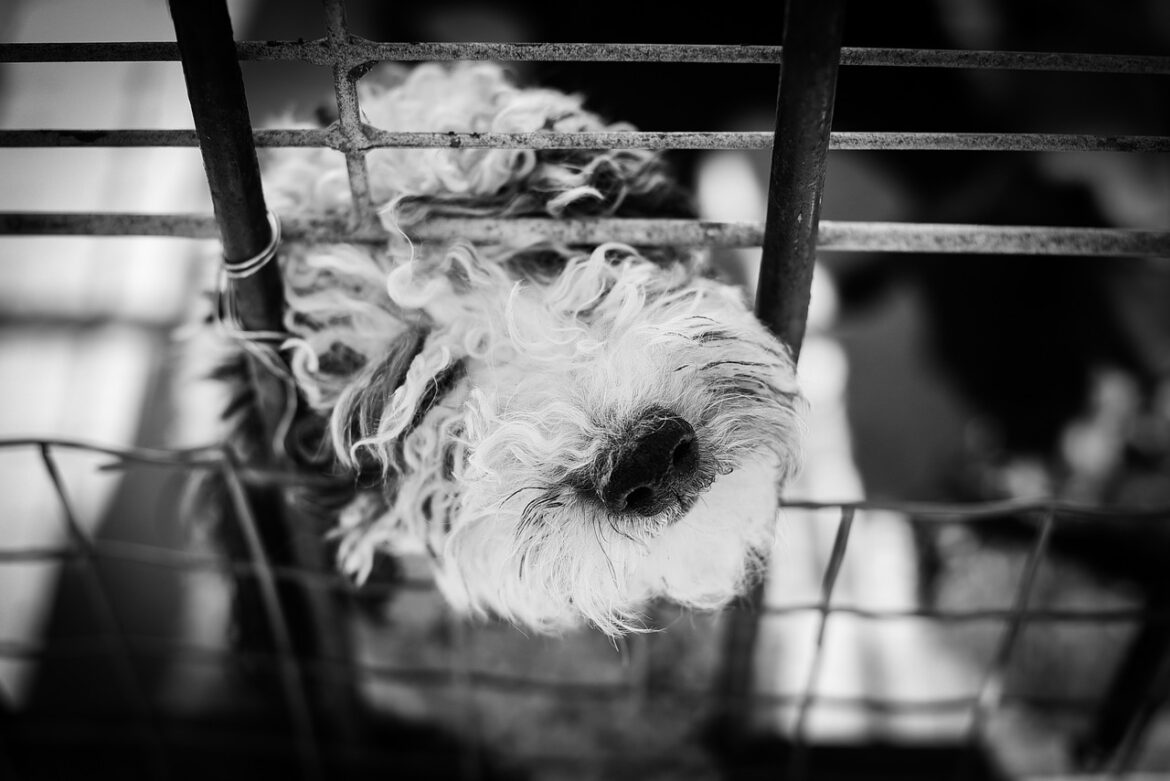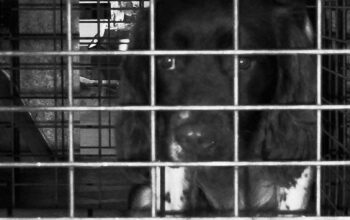There is not much accurate information about the containment phobia of dogs and it is often confused with separation anxiety due to the containment phobia that is sometimes triggered when the owner leaves the home.
In dogs, containment phobia is the fear of being confined to a single area and goes well beyond the simple fact that it is not good in a crate. The size of this area differs from dog to dog but can be anything from a cage to a bedroom or a fenced yard. When the dog is faced with the realization that he cannot move freely, panic, destruction and violent escape attempts will ensue; injuries to your dog and destruction to your house can follow. Although the exact cause of the containment phobia in dogs can be difficult to pinpoint, there are some theories that it actually starts during the birth process if/when there is difficulty moving through the birth canal.
Here are some signs that a dog might have containment phobia :
At an early age, there are certain signs that can be seen that are clues to containment phobia before the obvious panic begins to emerge. Some signs include acute jumping over a baby gate, jumping on doorknobs and opening doors when they want to enter a room, and quick and repetitive squealing motion when waiting for the backdoor to open. These signs don’t always mean a containment phobia is around the corner, but these signs are often common when analyzing a full-fledged containment phobia dog.
- In your house, destruction focused near windows and doors will build up. I have seen dogs chew holes in doors, chew the doors jambs, even rip up carpet near the doorway. I have also seen many sets of damaged window blinds and scratch marks on the windowsills from where the dog attempted to escape from the window.
- Many successful escapes from a car. I have seen escape artists bend bars from wire cages and squeeze themselves through the narrow space created from some bent bars. I have seen holes in plastic cages chewed and dogs pushing their heads up to the cage door so hard that the door has bent allowing them to escape.
- Several unsuccessful escape attempts from the cage. These can be a little harder to find because the dog is still contained and hasn’t yet escaped. However, multiple chew marks near the cage door, deep scratches near the cage door or on the floor of the cage and bite marks on the cage bars are all indicators that your dog has made some serious escape attempts.
- Various injuries to the dog. Many dogs will rip some of their teeth off to slice crate bars or chew through doors or windows. It can also be common to see ripped paws or broken nails from digging up carpet or repeatedly scratching the cage door. In your dog, some physical signs will be present. As the containment phobia triggers the panic, you may immediately see panting, excessive drooling, dilated pupils and spinnocking.
Containment phobia is more difficult to deal with than separation anxiety because it carries the possibility that the intensity will increase with time. Often, giving a dog with confinement phobia more space and space is not always the answer. For example, it may be logical to leave your dog in a bigger place, such as a bathroom, if your dog is escaping the cage. The bathroom will eventually not be large enough and the dog chews a hole in the door and escaped.
The next step would be to let your dog have the freedom to roam the house, but now the dog is targeting the doors and the windows as escape points. Next logical step would be to put a doggie door so that they can move freely inside and out of the home. Unfortunately, many dogs start to feel confined in that area and start chewing through the outdoor fencing, squeezing through the fence or jumping over it. Finally, a dog wants acres and acres of room to travel freely and not feel confined.



